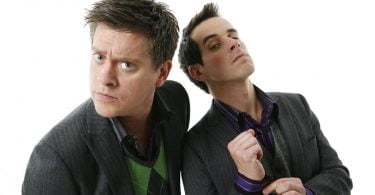The year was 1991. At a meeting of affiliates of the US network NBC in New York, Johnny Carson, its key late night star for 30 years, announced that the 1991-92 broadcast season would be his last as host of its flagship entertainment programme, The Tonight Show.
Carson, who had presented the programme since 1962, had based his version of the show on comedy, interviews with guests, and musical performances from the stars of the time. It was appointment viewing for millions of Americans who wanted to end their day, good or bad, on a high note, with a laugh or two.
The trend of appointment viewing continued for many years, including the programme presented by the man who Carson wanted to take over from him, David Letterman. Letterman had his own programme following Carson on NBC, but jumped to rival network CBS after NBC went in another direction and gave The Tonight Show to Jay Leno.
Letterman made the jump to CBS in 1993, and stayed there until his retirement this past May, ending an era of late night television that all Americans were accustomed to.
The digital shift
As Letterman retired, there was a shift in how late night television was consumed. The appointment viewing it maintained was changing in an age where clips were being posted on YouTube and shared on social media. No longer did you need to stay up until 11:30 (or 10:30 depending on time zone) to watch – now you could go online the next day and watch selections from the night before.
As a result, networks are struggling trying to keep the programmes and personalities that have become household names intact.
“People are just plucking your greatest hits, without having to sit through the rest of the show,” said Jimmy Kimmel in an interview with The New York Times. He presents his own late night programme, Jimmy Kimmel Live, on commercial network ABC. “There’s more focus on singles than on albums.”
Yet, the social factor was front and centre, not just for Kimmel, but most notably for NBC’s Tonight Show franchise, and its current presenter, Jimmy Fallon. However, Kimmel noted there was benefit from the increased YouTube viewership, with items including ‘Mean Tweets’ taking prominence.
“I don’t know that we would have been aware of how successful or popular those bits would be, until YouTube and the Internet reinforced that for us. Ratings are one thing – they’re an estimate. But with YouTube, you can look at the numbers. You can see exactly how many people watch something. We learned what resonates, and we started doing more of it.”
The viewer is in control
However, the idea of viral does not distract from the central ideas. James Corden, the British actor and comedian who went to present The Late Late Show on CBS earlier this year, said the focus remains on the programme itself.
“You cannot be chasing that, because it’s futile,” Corden told the Times. “On our show, all we try and do is go: Who’s on the show? What’s the most fun thing we can do tonight? And in that respect, it’s no different than what anyone making a successful late night show has tried to do.”
This upcoming broadcast season features the return of Fallon and Kimmel to the 11:30 slot, as well as Stephen Colbert, who replaces Letterman on CBS. As the on air light goes on, the question of the relevance of late night TV in a digital age will continue to be debated, as American audiences consider whether to watch live or go online and view segments the next day. This debate also plays out in the UK and whether to watch EastEnders or Graham Norton live or catch up on iPlayer the next day.
For now, the clear indication is that the viewer is in control. The question is, which button on the remote will be pressed?
What do you think? Have your say in the comments section below.









